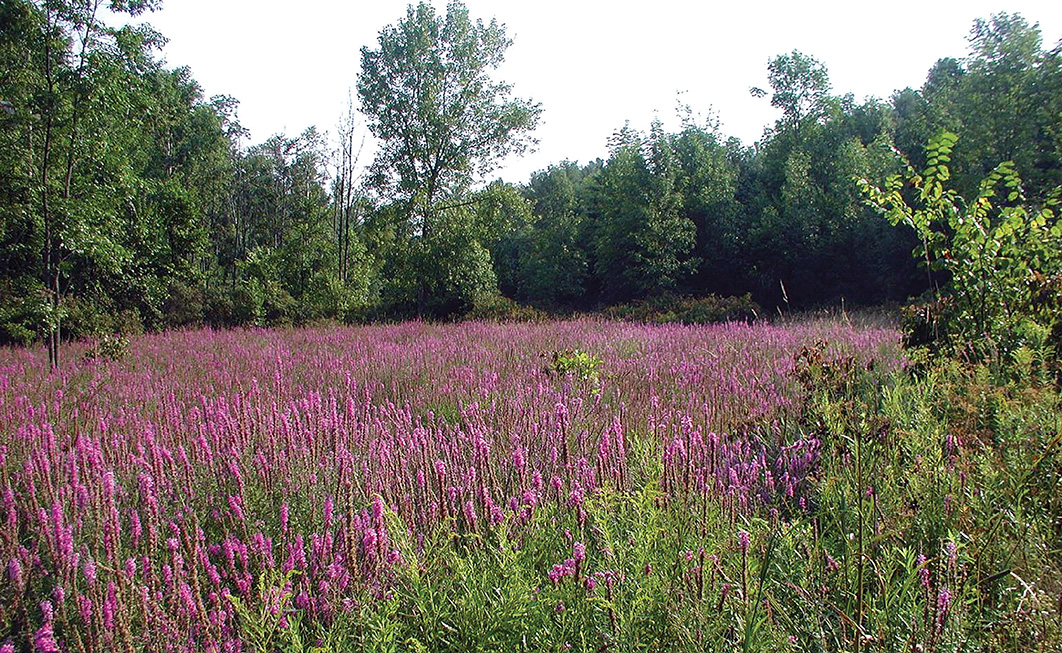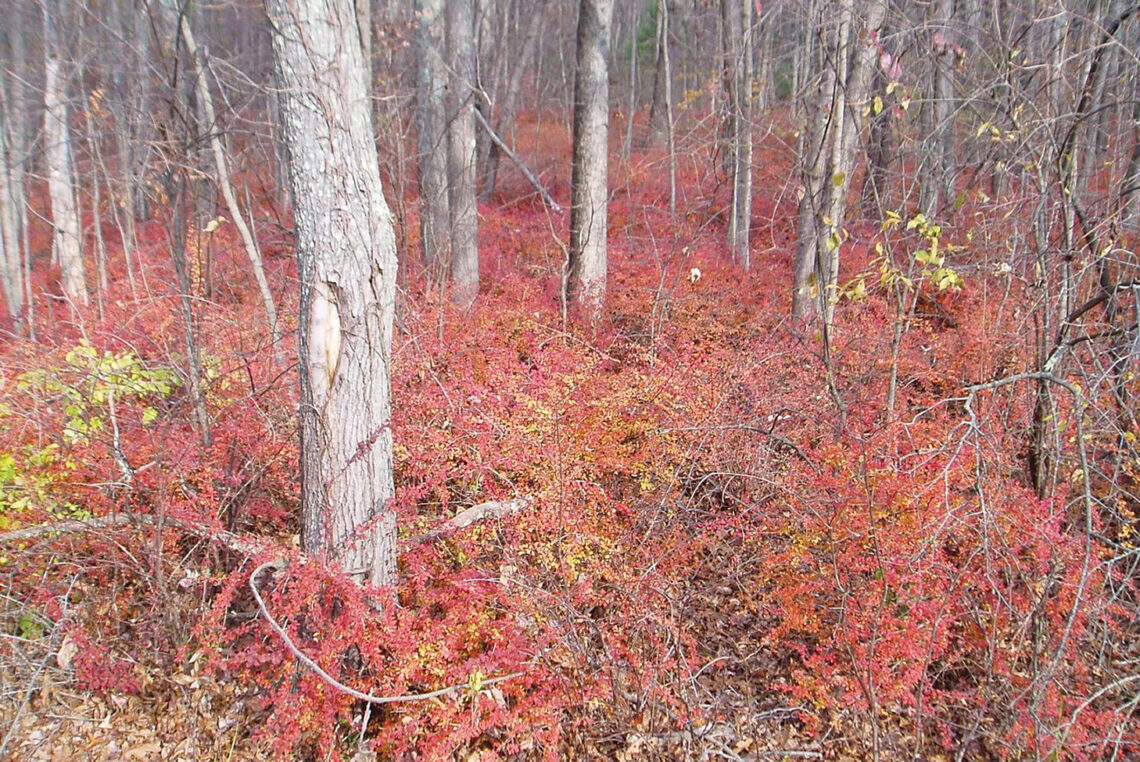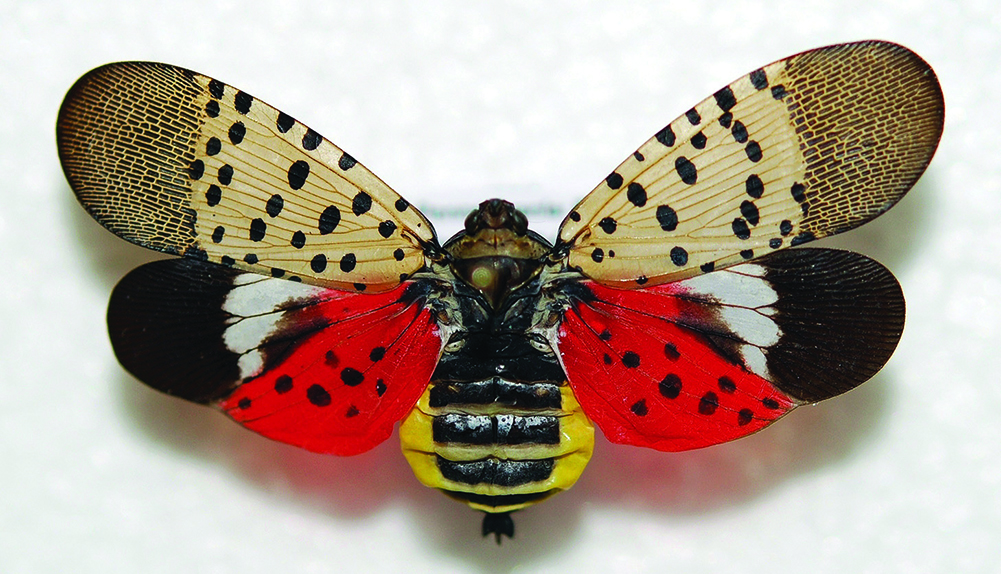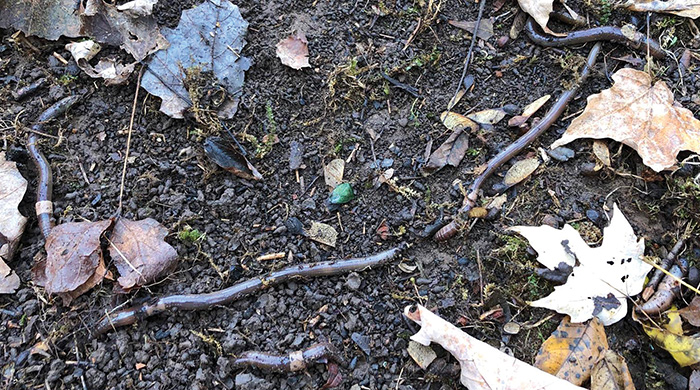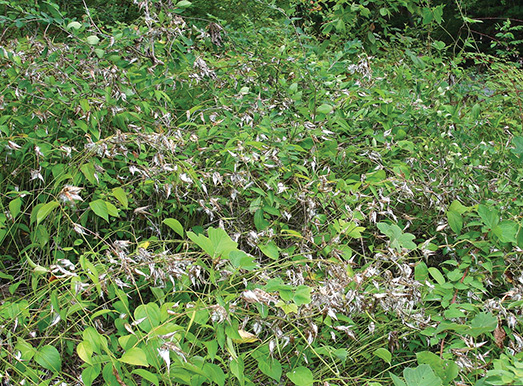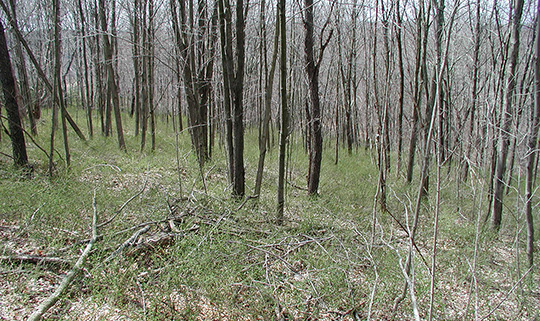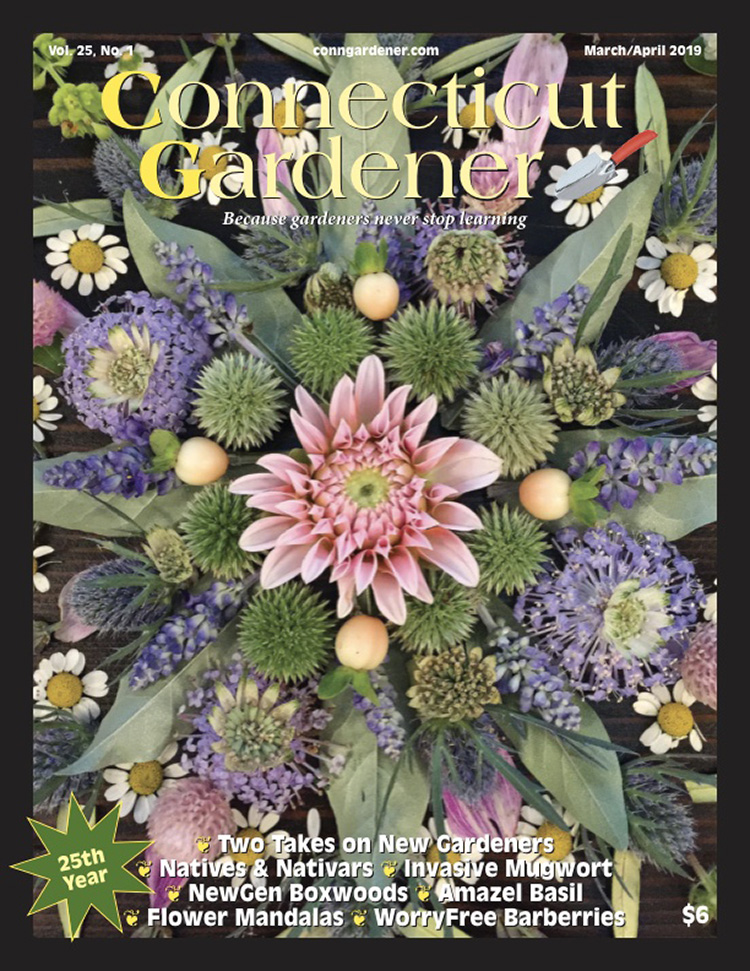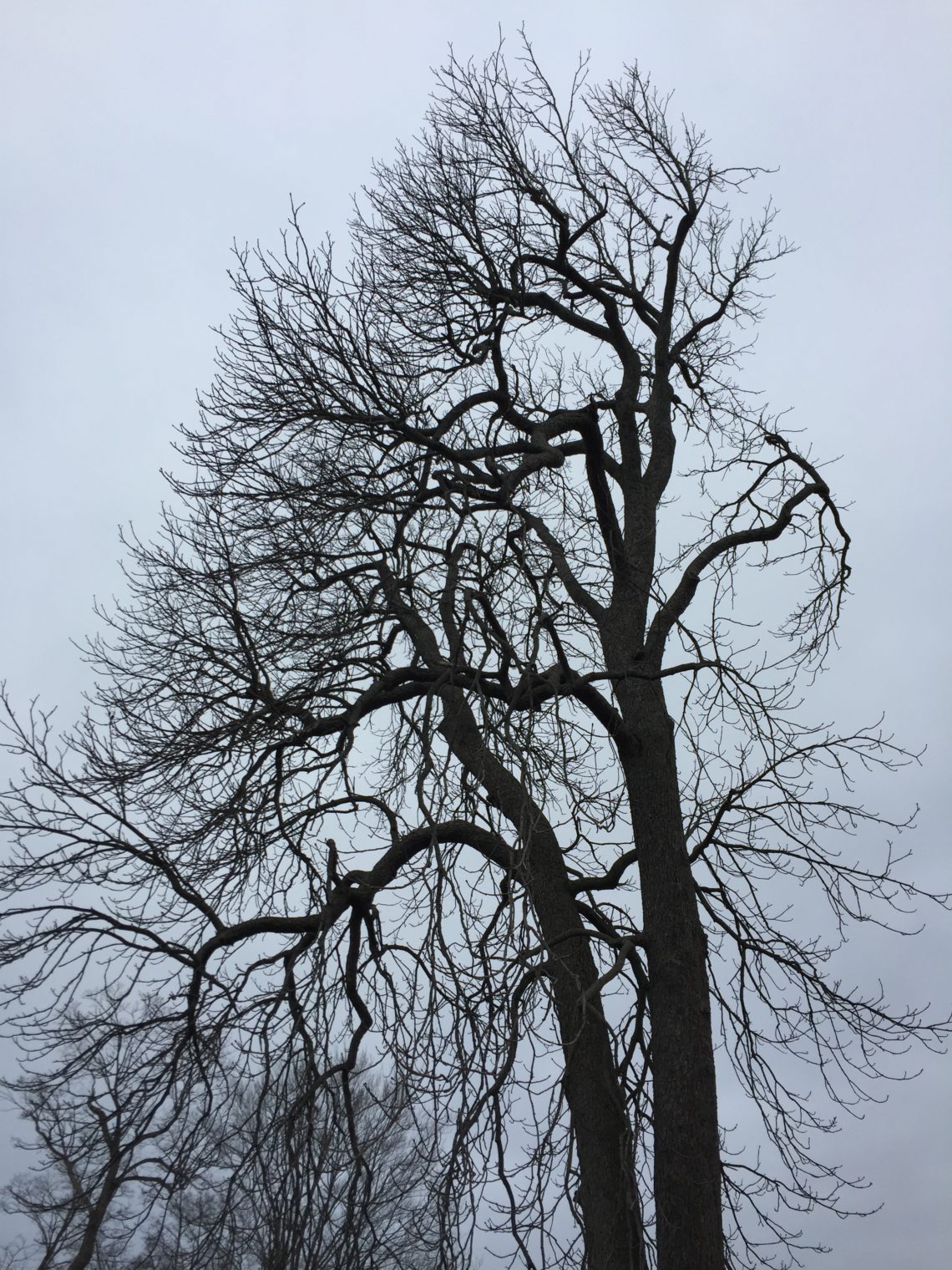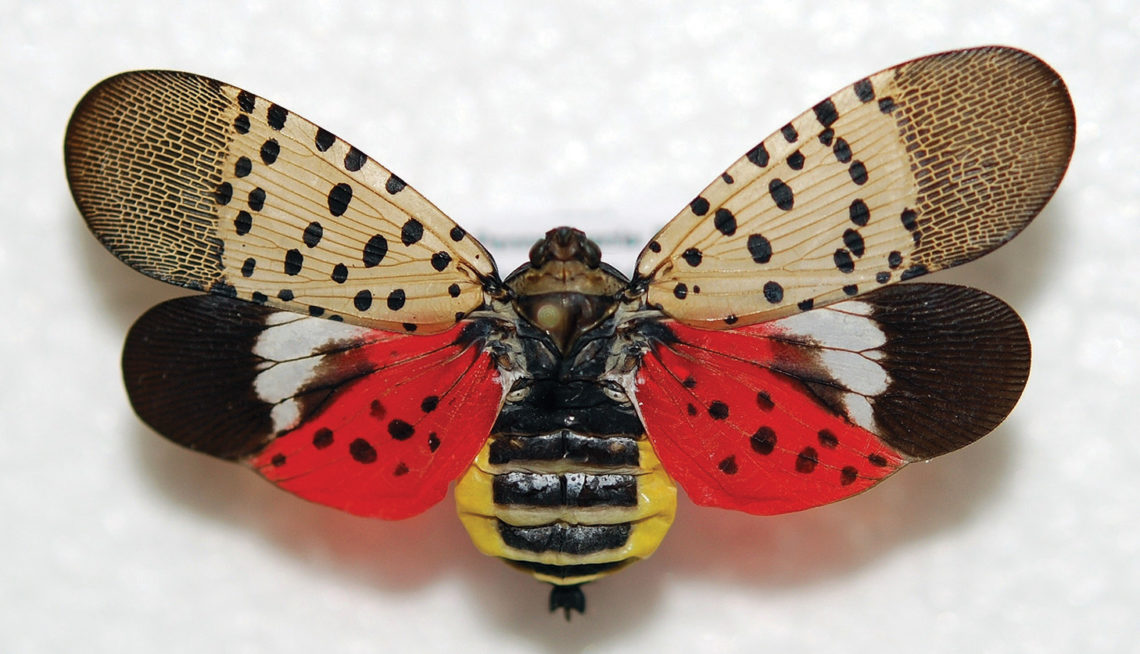By Will Rowlands Purple loosestrife (Lythrum salicaria) was the first invasive plant I learned about. In the 1970s I saw ever larger incursions along Route 17K in New York, south of the Catskills, on my way to visit my older brother near Ithaca. When travelling the same route ten years ago and fully aware of its invasive nature, I saw very few patches. The area had been gentrified in the intervening decades and was now home to numerous horse farms. Donna Ellis at UConn told me that beetles were being used for bio-control in New York State but the loosestrife is still out there … I just wasn’t seeing it.…
-
-
Invasive Japanese Barberry
Japanese Barberry (Berberis thunbergii) is a multi-stemmed deciduous shrub that flowers from April to May and fruits in late summer. The seeds are dispersed by wildlife after they eat and digest the bright oblong red berries that often persist into winter. It can also spread vegetatively by rooting where branches touch the ground. Native to Asia, it arrived in the U.S. in 1875 as a replacement for European or common barberry (Berberis vulgaris), which was found to be an alternate host for a rust that killed wheat and is now banned in Connecticut. Barberry stems can grow to 7 feet and have barbed thorns. The ovate, teardrop-shaped leaves are arranged…
-
The Spotted Lanternfly is Here
The CT Agricultural Experiment Station (CAES) has announced the detection of an adult spotted lanternfly, Lycoma delicatula, in Stamford and West Haven, and several live adults in Greenwich and New Canaan. Surveys in the areas of the detections will be conducted. Single adults were discovered in Farmington in 2018 and Southbury in 2019. The spotted lanternfly (SLF) is an invasive sap-feeding planthopper that was originally discovered in Berks County, Pennsylvania in 2014. It is native to China, India and Vietnam. SLF attacks many hosts and has the potential to severely impact farm crops, particularly apples, grapes and hops, and a number of tree species including maple. In addition to Pennsylvania…
-
Invasive Management in May & June
We list only mechanical control options below. Many thanks to Emmett Varricchio for developing the calendar. See it in full on the CIPWG website at cipwg.uconn.edu under 2018 Symposium Presentations. If you don’t get to it at the prescribed time, just remember that the best time to manage invasives is NOW! CUT/MOW: Delays/prevents seed production and depletes plant’s resources. Follow-up often as necessary. Repeated mowing is an effective control strategy for some plant species. PULL/DIG: Effective at removing seedlings and annuals. Organize volunteers and have a pulling party. Japanese Knotweed (Polygonum cuspidatum)Cut/mow mid-May to mid-June: Schedule three to four times a year. Can be effective, but don’t leave cuttings to…
-
Jumping Worm Update
By Annise Dobson Many of us have grown up thinking that earthworms are a sign of healthy, fertile soil. Recently, a bigger, faster, and incredibly abundant earthworm has been showing up in Connecticut farms, gardens, and forests. Earthworms can be beneficial in their native ecosystems and agricultural settings, but their ability to re-engineer soil can completely restructure ecosystems and the microbial, plant, arthropod and vertebrate communities that live within them. Native Earthworms in Connecticut While its true that most earthworms you will encounter are non-native,we have a small number of native earthworm species in Connecticut. Thelast glaciation is thought to have pushed earthworms out of Connecticut, but Dr. Tim McCay…
-
Black Swallow-wort – Monarch Menace
By Will Rowlands Black swallow-wort (Cynanchum nigrum) is an herbaceous, climbing, perennial vine that can grow up to 6 feet in length/height. It can climb by twining or ramble on the ground. It’s native to the Mediterranean coasts of France, Italy, Portugal and Spain and is considered invasive in Connecticut. It was reportedly cultivated in greenhouses in Ipswich, Mass. and the Harvard Botanical Garden where it escaped into the wild. Its botanical synonyms are Cynanchum louisae and Vincetoxicum nigrum. Common names include Louise’s swallowwort, climbing milkweed and black dog-strangling vine. This plant will take over meadows, pasture, old fields and quarries, hedgerows, vacant lots, roadsides, river banks, transportation and utility…
-
Tick Nurseries Editorial
To help those of who are seeking more answers about why barberry is considered invasive and a tick nursery — here’s a pdf and text of the editorial Will did back in 2015 (pre-digital CG). We hope it helps! It’s a very big subject, when you get down to it, and in our opinion, the more aware people are of their landscapes and the plants in them and their relation to the ecosystem, the better we are able to choose plants that are beneficial and non-invasive. And, as you will read, it’s wise to be aware of the environments where tickborne diseases can hide, and eliminate them if they exist…
-
Our March/April 2019 issue
Our March/April 2019 edition is at the printer. It’s scheduled to go into the mail on Feb. 20. For subscribers with digital access, it should be available the same day. We’ll also have plenty of copies with us at the Connecticut Flower & Garden Show in Hartford Feb. 21-24. Find us at the four corners (booth 831), our usual location — back-to-back with NE Seed. March/April 2019 features a breathtakingly illustrated story on Flower mandalas by Michael Russo of Trout Lily Farm (the cover story), and our friends and frequent contributors Lorraine Ballato and Nancy DuBrule-Clemente share their takes on the evolution and generation of a new generation of gardeners.…
-
Trees: A Tough Few Years in Connecticut
When the winter 2018-’19 CTPA (Connecticut Tree Protective Association) newsletter, “The Connecticut Arborist” arrived, the article by Chris Donnelly titled, “2018: A Difficult Year for Trees — How Can Arborists Help?” stood out. As a reader, we’ll assume you’ve noticed the increasing number of dead and dying trees as you drive around the state. For the many of us who love our trees and hate to see them perish for any reason, Chris’s article gives us some insight on what’s going on and where. The windstorms and tornadoes in our area in March and May, the continuing advance of the Emerald Ash Borer (EAB), plus the combined effects of drought…
-
Spotted Lanternfly in New Jersey
2018 – Spotted Lanternfly (Lycorma delicatula) has been reported in New Jersey less than 100 miles from Connecticut. According to USDA APHIS, “Nymphs feed on a wide range of plant species, while adults prefer to feed and lay eggs on tree of heaven (Ailanthus altissima). If allowed to spread, this pest seriously harm the country’s grape, orchard and logging industries.” For more information just do a search for Spotted Lanternfly USDA
